In our ever-changing world, things that were once considered taboo are fast becoming the norm. Many experts believe that insects will soon become a staple in diets around the world. Now, before you starting having flashbacks from the many bug-eating challenges on Survivor, there’s no need to eat them raw!
[the_ad_placement id=”in-text-1-type-r”]While the reality show contestants might have to chew on live bugs, there are many ways of cooking and preparing insects so that they are that much more appealing. There are also a large number of varieties to choose from which means that there’s something for everyone. Some like their bugs crunchy while others prefer a smoother, chewy texture. They also vary in size, so there’s no need to bug out over large worms and similar creepy crawlies.
Countries that serve insects
Insects are generally more commonly consumed by the indigenous people of various countries. Those who have remained closer to their roots and history tend to be more open to the consumption of foods that western cultures would consider questionable, at least. In some cases, toxins can be consumed in small enough quantities that they provide benefits rather than health risks. Natives in Australia are known for consuming large quantities of the Whitchetty grub.
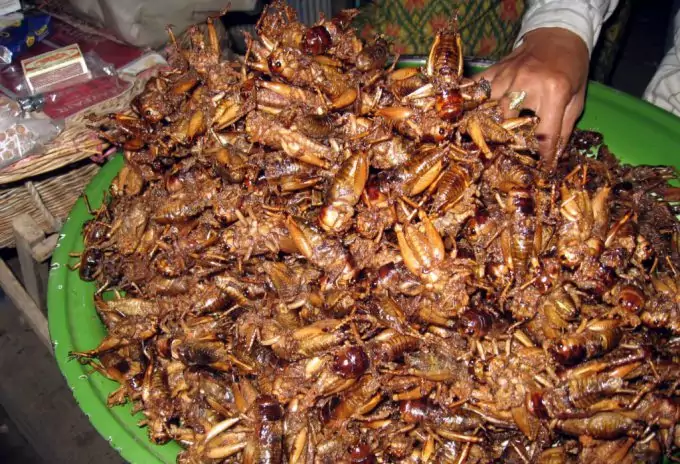
The large mopane worm is eaten by a large number of southern Africans while parts of Brazil and Columbia are partial to leaf-cutter ants. In places like Japan, insects are also gaining popularity, and they are often fried. It’s not only the adult insects that are considered a delicacy but also the eggs and larvae.
That said, as we see the ways of the world change and new ideas develop, it’s likely that the western world will become more accustomed to this way of life.
Benefits of eating insects
Eating insects can offer a number of advantages. Firstly, it’s important to consider the fact that the increase of human population directly affects the demand for a source of protein. For many of us, meat like beef, pork, and poultry are seen as the most common protein sources.
Breeding, raising, and all aspects of livestock farming are not only demanding, but they are also incredibly costly. Livestock don’t only need food and water; they also require medical care and daily chores like cleaning their pens requires man power.
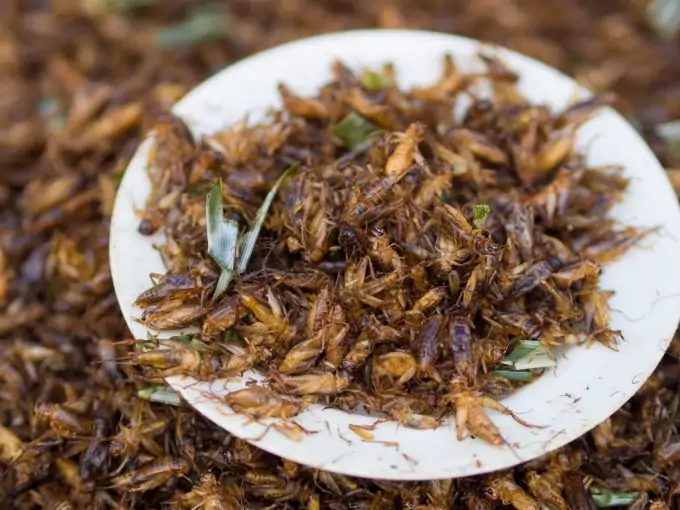
Insects, on the other hand, take up far less space, and they are much easier to care for. Like different types of meat, different insects are also rich in various nutrients. An insect meal can provide you with everything from protein and carbohydrates to vitamins, minerals and even healthy fats! Cultivating insects often means that the indigenous insects are the main focus. That said, large-scale import and export could be on the cards in the future – much like the fresh produce industry.
Possible risks
Just like any new kind of food, introducing insects into your diet should always be done with some degree of caution. You never know how your body might react which is why you should only try one at a time.
Another important consideration is the source of the insects. It’s important to know where they come from and the farming conditions. If the bugs have come into contact with any kind of pesticide, it can make them toxic and unsafe for consumption. It’s also extremely important that the insects are cooked properly, just as you would any other type of meat. Another possible risk is that of bacteria. This is partially solved by ensuring proper food preparation, but other measures might be necessary if large scale production is to succeed.
Environmental impact
According to a study by the University of Wageningen, the CO2 emissions from insects is at least double that of cattle! That said, insects do require less space and less care so perhaps this extra land could be put to good use to provide some kind of equilibrium. Insect farming will also reduce such problems as overgrazing and subsequent erosion and soil compaction. Livestock, like humans, are significant water pollution contributors.
Insects, on the other hand, limit the amount of water pollution Which is a clear environmental benefit. Whether you farm with livestock or insects, there is always an energy input and output ratio. Livestock have an average energy ratio of 54:1 whereas insects average at 4:1. Insects also tend to develop faster than livestock, and this is one of the leading contributing factors to this low ratio.
Types of insects to try
Different bugs have different textures and the flavors also vary significantly. If you are just beginning your bug-eating experience, it’s often easier to accept the idea of eating insects if you know what to expect. It also helps if you can associate these textures and flavors with those of familiar foods. Here are some of the most popular edible insects from around the world.
Agave Worm
These are also referred to as maguey worms, and you might even recognize them. If you have ever seen a bottle of tequila with a worm inside, it’s most likely that this is an Aegiale hesperiaris or Hypopta agavis moth larvae. The larvae serve as a means of authenticating the alcohol content of the bottle.

Image credit: aquavitaeinstitute.com
The worm requires certain alcohol content in order to remain preserved. These worms are commonly eaten in Mexico, and they offer a high nutritional value.
Ants
There are a number of different types of ants to choose from and, in terms of insects, these might be the easiest to stomach. They are quite small compared to other bugs so you can pace yourself until you get used to the idea. Honeypot ants are known for their large abdomens. These abdominal structures are filled with a sweet substance, kind of like nectar, which is where they get their name. This substance is used to feed the other ants, and this makes them a sweet treat for humans as well.

In Australia, they are dug up and eaten raw by the Aborigines. Leaf-cutter ants are mostly consumed in South America. Their flavor is described as a combination of pistachio and bacon. They are usually roasted before they are eaten and, in Colombia, they are served as an alternative to popcorn at local movie theaters. Lemon ants are native to the Amazon jungle and, as the name suggests, they have a lemon flavor.
Bamboo worm
This worm is popular in Thailand where it is served fried. These worms are the larvae of the Grass Moth, and they feed on bamboo before they reach the necessary size for their transformation.
Bees
Bees can be eaten in various forms and, considering their sweet diet, they are tasty little treats. As larvae, they are often sautéed in butter.
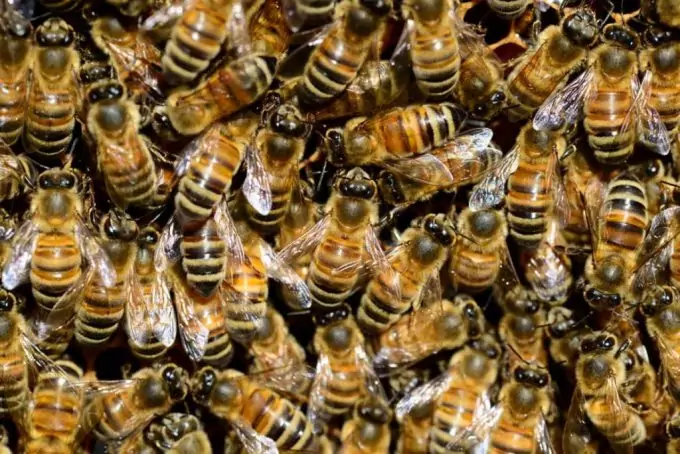
This gives them a kind of mushroom and bacon flavor. The adult bees are roasted before being ground up to make flour. The Chinese use ground bees as a home remedy for sore throats.
Centipedes
If you visit China, you will most certainly come across centipedes sold as street food. They are popular among the locals and courageous tourists too!
Cicada
They are usually found in Eastern parts of the United States, and they live underground for approximately 17 years before they make their appearance above the soil and transform into adults. Just after their adult transformation, their bodies are soft and juicy. They are delicious and tender which is why they are so popular in Malaysia, Japan, Thailand, and other countries.
Cockroaches
This is one of the toughest bugs in the world. No matter what this world goes through, roaches always seem to survive! Now, you don’t want to start harvesting roaches from your drains! Properly cultivated cockroaches are actually perfectly clean and safe to eat.
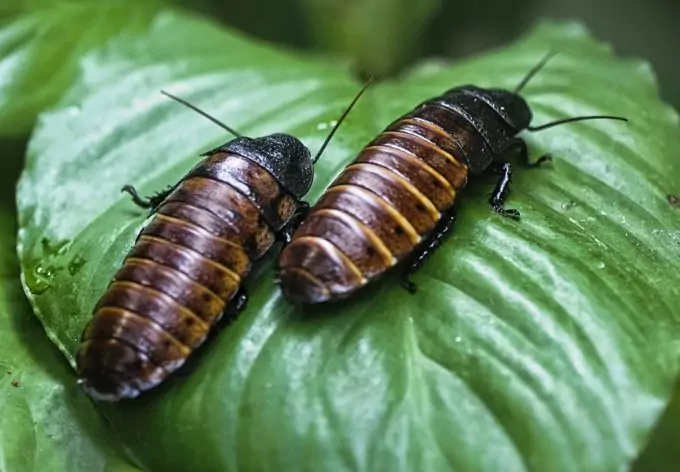
They can be prepared in a number of ways including fried, boiled, roasted, or sautéed. The hissing cockroaches of Madagascar are said to have the flavor and texture of fried chicken.
Crickets
These crunchy morsels can be prepared in a number of ways from fried or roasted to boiled or sautéed. It all comes down to personal preferences.
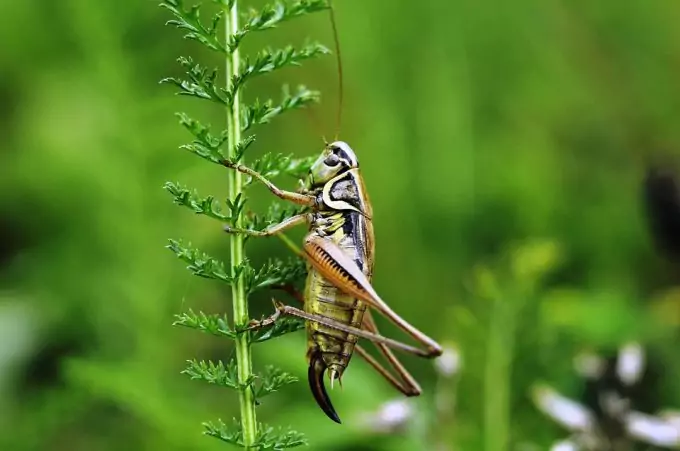
They are one of the most popular bugs for human consumption and highly popular in Thailand, Mexico, and Cambodia.
Dragonflies
Dragonflies can be eaten as larvae or as adults. They are popular in China and Indonesia.
[the_ad_placement id=”in-text-2-type-r”]The most popular methods of preparation are boiling and frying.
Dung Beetles
The dung beetle might not sound all that appetizing but they are quite a popular fried treat and, once you get over the idea of them pushing balls of dung around, you can enjoy their abundant flavor.
Earthworms
These worms are known for their high content of protein and iron.
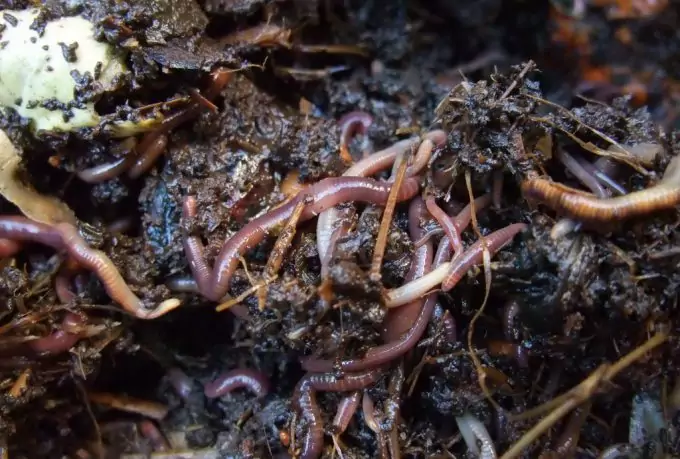
A wide number of cultures eat these worms, including the natives in Venezuela.
Flying Ants
In Guatemala, the queens are roasted and served on a comal with lime juice and salt. Their flavor has been compared to that of pork rinds.
Grasshoppers
Roasted and served with chili and lime is how these bugs are served in Mexico. They are known for being rich in calcium and protein.
Hornworms
These worms are often found feeding on tomatoes and, for this reason, they are said to have a similar flavor.
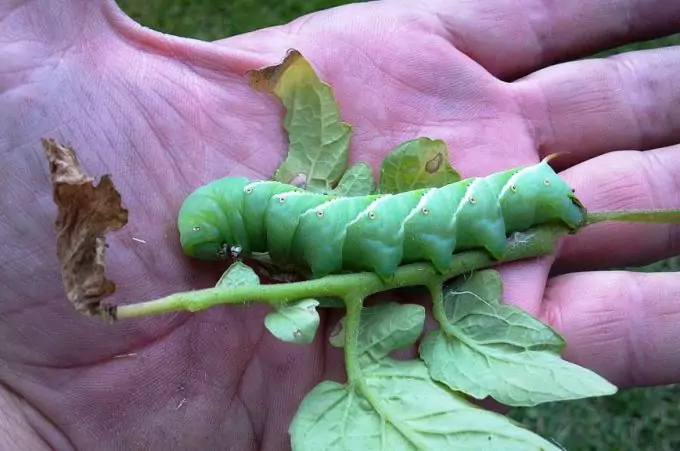
Their flavor also includes hints of crab or shrimp to go with that tomato taste.
Jumiles
You might know them better as stink bugs, and they contain a substantial amount of B vitamins. Apparently they taste a lot better than they smell. In fact, they have more of a bitter taste and are known for their analgesic and tranquilizing properties. In many cases, they are eaten alive because they are known to survive even the harshest cooking methods.
June bugs
These insects are eaten as adults and larvae.
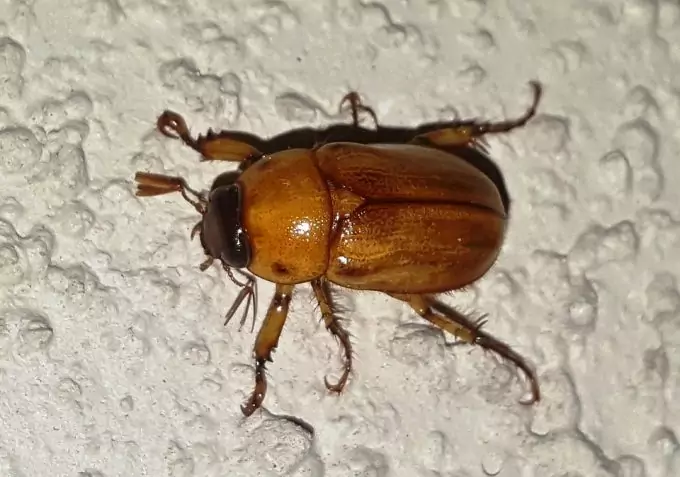
They are most popular among Native Americans. They are often prepared over hot coals and served as you would popcorn.
Locusts
These are one of the few insects that those with certain religious beliefs may consume. The Old Testament refers to locusts as part of dietary instructions which are taken very seriously even today.
Lice
These are some of the smallest bugs of all and, in native cultures, they are often eaten raw and as soon as they are removed from the host.
Mopane worms
This is a popular grub in Southern Africa, and they are sought after that they can fetch a higher price than beef! They can be eaten in a number of ways. Some like to dry the worms out, and they say it has a flavor and texture similar to jerky.
Mealworms
These worms are anywhere and everywhere. As the name suggests, where you find meal, you will find the mealworm!
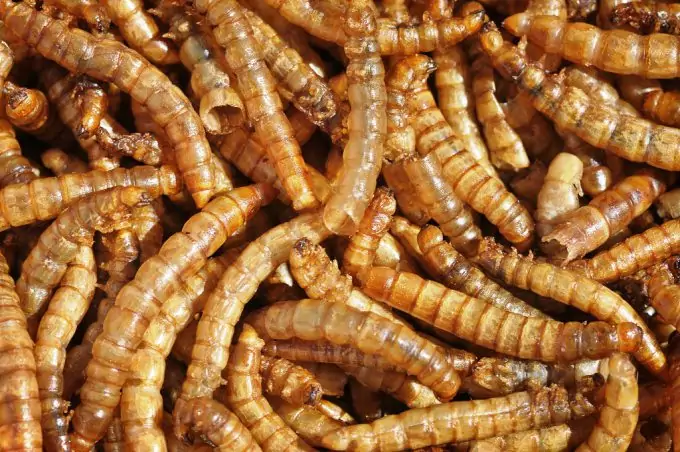
These worms eventually grow into mealworm beetles. As worms, they can be sautéed, boiled, fried, or roasted. Their flavor has been compared to that of shrimp with touch of nuttiness.
Midge flies
These are most commonly enjoyed in East Africa. They are pressed together to form a solid block before being cooked and the result is called the Kunga cake.
Nsenene
This is a grasshopper found in Uganda, and it is considered to be a delicacy. It is often fried, and the flavor is said to be a combination of shrimp, croutons, and chicken.
Sowbugs
Due to their shape, they are often referred to as pill-bugs. Although they might look like your average creepy crawly, they are actually a relative of the lobster and crab family! When you boil them, they apparently turn red.
Sago grubs
These bugs are popular in Indonesia and Malaysia. They are coated in sago flour and wrapped in sago leaves before being cooked in Papua New Guinea and Borneo.

Image credit: mysabah.com
They are said to taste like bacon.
Silk worms
Popular in Korea, these worms are enjoyed as a byproduct of the local silk industry.
Scorpions
These are one of the fiercest bugs of all. In China and Thailand, they are fried, and they have a flavor similar to that of a crab.
Tarantulas
Even if you don’t like holding spiders, you might enjoy a taste of this arachnid.

Image credit: retreatours.com
They are popular in Cambodia and rich in protein. Their flavor has been compared to that of crab.
Termites
This is another small bug often eaten raw in places like Kenya. They are often consumed as soon as they have been harvested.
Wasps
Like bees, these bugs can be eaten during various stages of its development. They can be boiled, fried, sautéed, or even roasted. They are said to have an earthy and buttery flavor.
Walking Sticks
Popular in Papua New Guinea and Asia, they are known for having a leafy taste and, if you enjoy fishing, you might find their legs suitable substitutes for fish hooks.
Waxworms
They are fed honey and bran when cultivated in captivity. They can be sautéed or roasted, and they taste like a kind of nutty mushroom. They are also known for their high content of essential fatty acids which makes them both nutritional and beneficial in many ways.
Wichetty grubs
A popular bug among the Australian Aborigines, they are often roasted over hot coals.
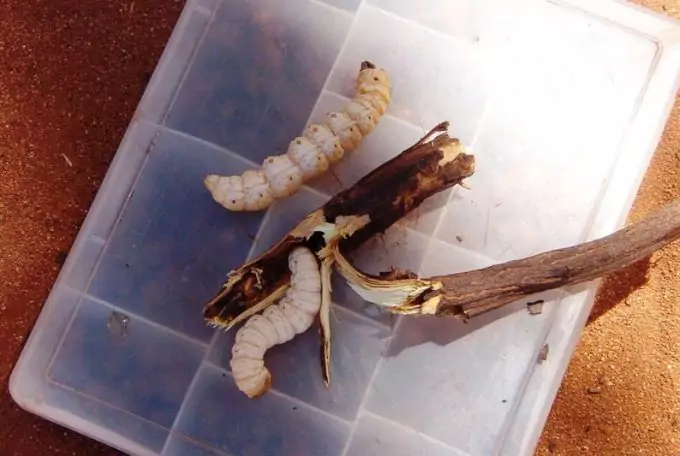
They are rich in nutritious fats and protein. They are said to have a kind of scrambled egg flavor with hints of nuttiness.
Cultural considerations
Another important issue to think about is that of culture. We all have our own preferences in terms of diet. Take mushrooms for example. Some people love them whereas others cannot stand them. Whether it’s the idea of eating “fungus” or the texture, it’s mostly a mental issue and the same can be said for insects.
See also: Wild Plants You Can Eat: A List of Edible Wild Plants
Many of us are raised with a sense of disgust for anything that wriggles or crawls. For some, there’s no getting past it. For others, it’s all about mind over matter! In some cultures and religions, food needs to be cultivated and prepared in a certain way.
Similarly, some foods are not culturally accepted at all. In Judaism, for example, most insects are not regarded as kosher apart from the kosher locust. Such cultural and religious matters always need to be respected and taken into account.
Worth a try at least
If you are still cringing at the idea of a juicy worm squishing between your molars or that crunch of a cricket’s exoskeleton, just remember that you never know until you try it! Just like introducing solid foods into a baby’s diet, it’s good to take it one step at a time.
[the_ad_placement id=”in-text-3-type-r”]For those new to a bug diet, some of the best ones to start with include beetles (dung, June, and rhinoceros), butterflies and moths at various stages of development, bees, wasps, and even ants. If you don’t mind the crunch, then by all means tuck into a few crickets, grasshoppers, and locusts. You might feel the need to work your way up to things like flies and mosquitoes.
To find out how to survive in the wilderness or in any situation, see our guide to wilderness survival for more information.



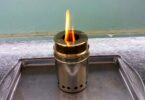


I didn’t know that you can eat these. You are right that this delicacy is not for everybody but one should get to try at least one of these once in their lifetime.
Insects are healthy, nutritious alternatives to mainstream staples such as chicken, pork, beef and even fish. I know that in some Asian countries, there are a lot of street food offering edible insects. I am not sure though if I can do that, but maybe, if I’ll be left with no choice. Anyway, I watched a lot of exotic chefs cooking crickets. Just be careful not to buy any insects from the pet store. Not all kinds of edible insect are “edible”.
Eating bugs can help save the world!
They are rich in protein and other nutritious supplements and there is plenty of them. Thus, we should really spread the word of edible insects to those countries which still consider it unusual.
Thank you James for sharing your opinion with us.